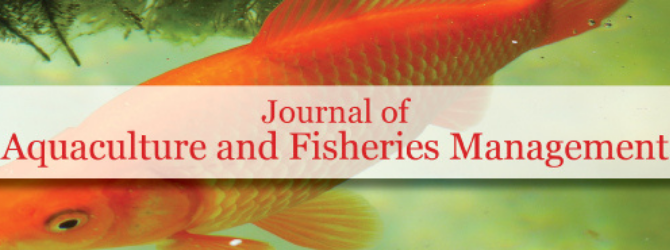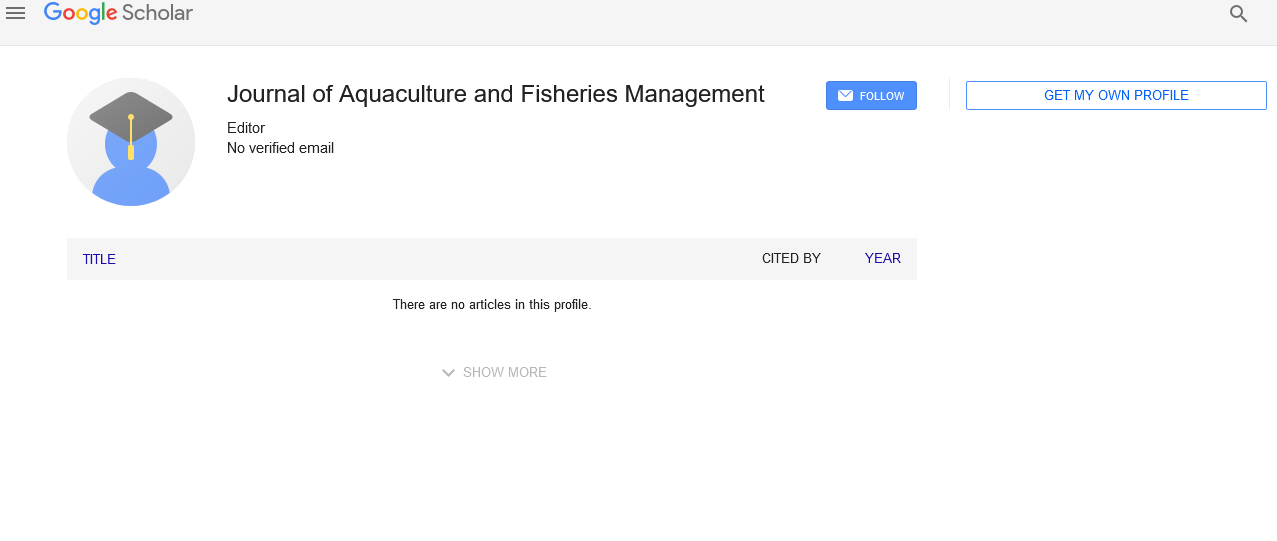A brief analysis of china fisheries
Received: 07-Dec-2021 Accepted Date: Dec 18, 2021; Published: 28-Dec-2021
This open-access article is distributed under the terms of the Creative Commons Attribution Non-Commercial License (CC BY-NC) (http://creativecommons.org/licenses/by-nc/4.0/), which permits reuse, distribution and reproduction of the article, provided that the original work is properly cited and the reuse is restricted to noncommercial purposes. For commercial reuse, contact reprints@pulsus.com
Description
Fisheries also are called “capture and aquaculture industries”, that is an historical business in China. in line with historic facts, fisheries may be dated back to as early as 11th century B.C, and had already accomplished a large scale within the Warring States duration (475 B.C-221 B.C). The sector's oldest recognized work on fish lifestyle - Fan Li's revel in on Fish Farming—changed into written in 460 B.C., over extra than 2400 years ago. After the founding of new China, fisheries entered a new level of development, especially after the adoption of the reform and beginning-up policy in 1978, while fisheries regulations had been adjusted in accordance with the united states's circumstance and adjustments in fishery assets, and aquaculture-orientated approach had been favored, which has brought about increasing enthusiasm and creativity amongst fishermen.
Manufacturing elements and production outputs
Information of fisheries manufacturing characteristics and production outputs from January 1 to December 31 yearly are obtained by way of surveys conducted by means of the Chinese language Ministry of Agriculture, with respondents from fisheries groups, businesses and units from all provinces, independent areas and municipalities (excluding Hong Kong SAR, Macao SAR and Taiwan), except for studies institutes. Outputs of aquatic merchandise are weighed at time of capture (raw weight), except for 3 alum jellyfish and algae which can be measured through dry weight, at the same time as the output of algae is included in aquatic products. China’s aquaculture industry continues to be developing due to the fact manufacturers are intensifying their farming efforts. Manufacturers are increasing outside inputs of strength and pelleted feeds, or upping stocking densities to gain high output volumes. Although this has yielded an impressive 7.5% boom rate during the last 30 years, conventional intensification is main to more environmental dangers and better farming expenses usual. The researchers advocate that policymakers put into effect centered improvement plans to sell the sustainability of different aquaculture systems. This could consist of developing certification schemes for aquatic foods that are created from non-fed aquaculture manufacturing structures. Policymakers could offer subsidies to producers who follow organic aquaculture policies as nicely. Certifying and subsidizing non-fed aquaculture should help those structures develop and make their meal outputs extra economically competitive. Invest extra assets into aquaculture studies. The information on the wearing potential of aquaculture waters, ecosystems procedures to management and the manufacturing capacity of aquaculture zones will assist the enterprise to expand strategically and sustainably. Offer preferential loans to farmers who undertake ecological intensification as a production model. This has to coincide with guidelines that promote the uptake of ecological intensification for fed aquaculture in ponds, near shore and in recirculation structures. Promote aquaculture projects in areas with decreased land-use impacts. Policymakers could facilitate ventures – by providing loans and subsidies – in waterlogged salt-alkali environments, paddy fields or offshore environments. Integrate aquaculture activities with tourism, education and renewable power generation (like wind and solar energy). This would help aquaculture projects achieve their economic and social sustainability objectives alongside their environmental ones. Phase-out fed aquaculture in large inland waters, unless closed facilities without pollution risks are developed and adopted. This would help protect and potentially restore inland water systems. China’s aquaculture industry wants to achieve high production outputs and minimal waste discharges while operating with a smaller carbon footprint. The researchers believe that if China can increase its use of non-fossil energy while adopting ecological intensification, it can meet this production goal and maintain its status as the global aquaculture leader.
Aquatic production in predominant fishery nations
The writer retrieved the statistics of aquatic production in the global’s important fishery countries or regions from the FAO database, and used the statistics of the top 10 generating nations or regions, such as China, India, Indonesia, Vietnam, America, Japan, Peru, Russia, Myanmar and Norway for analysis. The aquatic manufacturing inside the pinnacle 10 international locations or areas in proportion to the world's total output has elevated from 40. 51% in 1980 to 69.16% in 2014, an increase of 28.65%. A standard know-how of the improvement developments of global fisheries may be obtained by analyzing the fishery statistics from these 10 international locations. China is the world’s dominant aquatic food producer – contributing 58% of global aquatic food products in 2018, according to FAO data. When seaweed is excluded from production figures, China aquaculture output reached 47.56 million metric tonnes in 2018. Current projections show that China’s aquaculture production could continue to grow by 36.5% in 2030 when compared to 2016. However, this increased output has come at a cost. Intensifying production has led to multiple environmental challenges like pollution, land degradation and disease outbreaks. This makes the future development of aquaculture uncertain and is spurring calls for more stringent environmental protection policies. The industry is facing pressure to reduce its energy use, water, land, and feed and fertilizer inputs while increasing its production volumes. It needs to find a way to meet its food production targets in an environmentally responsible manner or it could lose its competitive edge.
Expanding scale of fisheries economics, consistent growth in the delivery of aquatic products in the 12th 5-12 months period, China's fisheries have made outstanding achievements. The whole output of aquatic products accounted for 38% of the worldwide production, aquaculture production accounted for approximately 62% of global aquaculture production.





